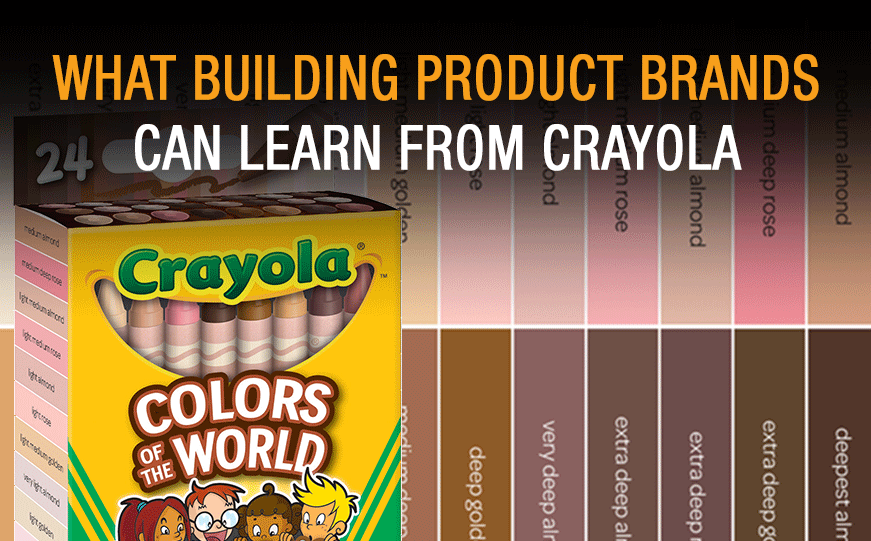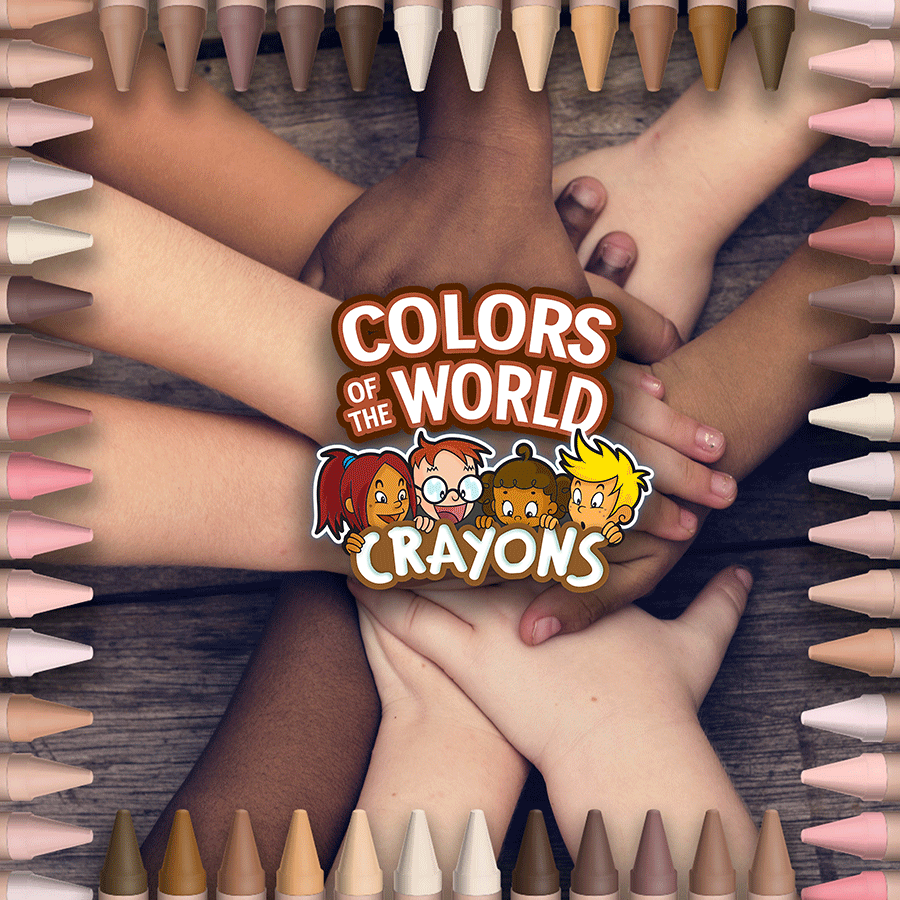Since its beginnings in 1903, Crayola has been an important part of everyday life for kids, parents, and educators. That didn’t happen by accident.
The brand has been very intentional about how it cultivates such a strong following, and their approach holds some important lessons for building product manufacturers.
Coloring Outside the Lines
So, you may be asking, what do crayons… have to do with building products?
Well, in terms of the products themselves, almost nothing. A simple, colored wax stick used by children could not be more different than building science, water conservation, and indoor air quality. Or the myriad of home and building products, specially engineered to do specific jobs.
But the branding and marketing behind the world’s leading brand of crayons — and one of the most iconic names in the world — sets itself apart at a when a sea of sameness is too often the norm.
Studying the company’s approach to branding and marketing provides us a few key takeaways that building product brands can apply to their promotional efforts.
Find Your North Star
The pandemic presented a challenge to virtually every company in the world… and Crayola was no exception. However, Crayola was able to navigate through the obstacles by having a keen sense of their mission, or “North Star.”
You see, the brand team that has inspired creativity for more than a 100 years do not see themselves as a crayon manufacturer. Instead, they view their mission as being much deeper. “We’re in the business of helping parents and educators raise creatively alive kids,” says executive vice president and general manager Victoria Lozano.
Having a strong sense of that mission has helped the company, which is now a subsidiary of Hallmark cards, develop new products and execute marketing strategies to support them. So, when the pandemic hit, the brand was able to quickly adjust course. And realize fully the opportunity to help schools and families keep kids engaged. Something that became increasingly important as time went on.
This is an important lesson for building product manufacturers. You’re much more than just a manufacturer of things. You fill important needs and solve people’s problems. Understanding that deeper meaning will help you stay relevant to your customers and prospects.
Don’t Just Pay Lip Service
In the past year, social issues have taken center stage, and awareness of ongoing societal problems has been heightened. This is especially true of issues surrounding diversity and inclusion. Just this week, President Biden signed a bill to establish Juneteenth, which commemorates the end of slavery in the U.S., as a federal holiday.
While many companies have struggled to hit the right tone — and some were accused of making empty statements — Crayola jumped into action. The company introduced its Colors of the World collection, crayons in 24 different skin tones. The collection enables kids of all backgrounds to feel included and to be able to more realistically create what they see in the world around them.
What’s most interesting about the collection is that it wasn’t merely reactive — the product had, in fact, been in development before the pandemic. So, the marketing truly reflects the brand’s deeper commitment to diversity.
Addressing social issues can be challenging for many companies. The lesson from Crayola is to not just pay lip service. But rather, to take real action that’s rooted in your building product brand’s values. First and foremost, ensure that your actions are authentic. And based on a commitment to making a real difference.
Follow a Connected Strategy
Building product marketers can learn from how Crayola leverages a brand strategy developed around three main pillars-of-opportunity: products, experiences, and content. The company — like yours should also — view each pillar as equally important in creating, “an ecosystem for the brand,” according to Lozano.
In addition to its iconic crayons, the company recently introduced “just in time” products, like face masks. Crayola also operates experience centers at major retail destinations, and its content strategy offers how-to’s and ideas for families to create fun projects.
This week, in celebration of Juneteenth, the brand’s experience center at Orlando’s Florida Mall is providing free custom boxes of 32 crayons — and a colorful journey that allows families to fill their box with their own choice of colors — from a 40-foot “Pick Your Pack” wall.
How might you ramp up your own brand experiences at dealer days and NARI Nights this fall?
All too often, companies view their product and marketing strategies as separate.
The idea that everything works together to create a full — and fulfilling — brand experience is a lesson for everyone in building products marketing.
Not long ago, we wrote about how companies like Kohler use experiential marketing to engage their customers.
By giving equal weight to all three of their pillars, Crayola takes this idea to another level. The people responsible for creating experiences and developing content have an equally important job as those in product development.
That’s how the brand has built and maintained loyalty for more than a century.
The Bigger Picture
As a building products marketer, your brand may not be an integral part of your customers’ lives when they are children. However, keep in mind that you can certainly nurture your prospects’ journeys, as you lead them from “Awareness”… to “Consideration.” And from “Trial” to “Purchase.”
By having a strong sense of your brand’s mission — addressing important issues authentically, and creating an immersive experience — you can generate long-lasting, emotional connections between your brand and your community of advocates. And that’s a relationship worth the investment.
Looking to create an integrated brand marketing plan that sets your company apart from the competition? Send an email to Steve Kleber at sk@kleberandassoicates.com.





